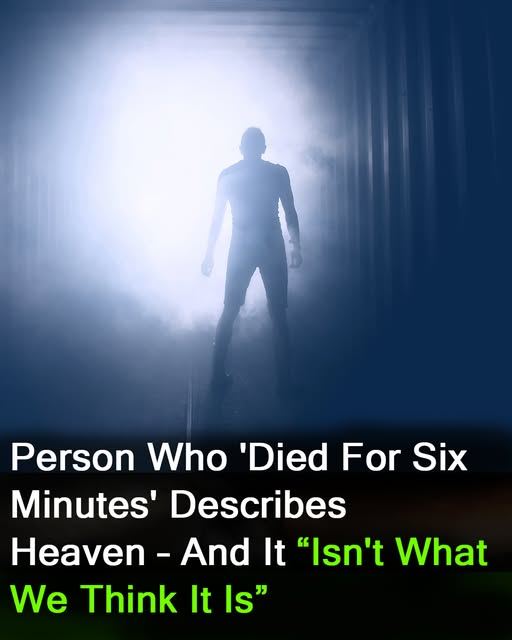On July 7, 2025, an anonymous Reddit user shared an account of a near-death experience that has since resonated with thousands. Unlike the serene or euphoric visions often described by those who brush against death, this story was dark, confusing, and emotionally harrowing. It wasn’t the warm light or gentle peace commonly reported—it was something far more disturbing.
The individual had suffered sudden cardiac arrest and was clinically dead for six minutes before emergency responders revived them on the way to the hospital. In that brief window—long enough for the brain to be starved of oxygen and for life to seem extinguished—they claimed to have entered a reality beyond description. What they encountered was not comfort or reunion, but a presence that felt both childlike and cruel.
According to their account, this presence seemed to toy with them emotionally, treating their feelings as if they were fragile playthings. The anguish was not physical—there was no fire, no pain of injury—but psychological, crushing in a way almost impossible to convey. They described a despair that hollowed them from the inside, stripping away any sense of safety or dignity. In their words, it felt like being “batted around like a toy” by something that took delight in their suffering.
This stands in sharp contrast to the typical near-death narratives. Tales of tunnels of light, overwhelming love, or reunions with lost relatives often leave readers comforted or hopeful about what comes after death. This account offered none of that solace. Instead, it presented a vision of existence beyond life that was disorienting, chaotic, and terrifyingly ambiguous.
At one point, the presence delivered a cryptic warning: the person would be returned to life but must never speak of the experience. The message was both threatening and puzzling. Why forbid disclosure? Why allow survival if silence was demanded? Even now, the Reddit user admits they wrestle with that question. Sharing their story feels like defiance, yet staying silent was never an option for someone so profoundly affected.
When the medical team revived them, returning to consciousness was rough. The body could be stabilized with oxygen, defibrillators, and medications, but the mind carried invisible scars. While physically recovering, they were haunted by the memory of those six minutes. It did not feel like a hallucination or a dream—they were adamant. To them, the experience held the weight and clarity of something real.
Doctors offered a more conventional explanation. They suggested that oxygen deprivation, trauma, or erratic brain activity during resuscitation could account for the visions. Neurologists often describe near-death experiences as illusions created by a brain in crisis: surges of electrical activity, chemical imbalances, and distorted perception can generate sensations that seem authentic. From a clinical perspective, the event could be viewed as a neurological phenomenon, not a spiritual one.
The user rejected that interpretation. The emotions were too raw, too vivid, too unlike anything experienced before. Dreams fade, hallucinations blur, but this memory clung with a weight imagination could not produce. It left them not only shaken but fundamentally changed in their perception of life and death.
The account ignited intense online discussion. Some commenters related, sharing their own near-death experiences that were unsettling rather than comforting. Others tried to offer reassurance, noting the brain’s mysteries and that such experiences might not reveal any ultimate truth. Still, the story’s haunting power lies in its demonstration of the diverse realities people can encounter in those extraordinary moments between life and death.
For the writer, the effect was deeply personal and ongoing. They confessed to feeling spiritually destabilized, as if their foundational beliefs had cracked. Instead of clarity about what lies beyond, they were left with dread. Death no longer seemed like release or reunion; it loomed like a shadowed question mark.
Yet amid the fear was resilience. By sharing their story, they transformed personal torment into a testimony that might help others. Their experience is a reminder that near-death encounters are not universal. They can be peaceful, terrifying, confusing, or all three. They can challenge assumptions, unsettle faith, and pose questions science has yet to answer.
What this individual—or perhaps just one mind—experienced during six minutes of being “dead” was neither heaven nor hell, nor the classic light at the tunnel’s end. It was something stranger, darker, and harder to explain. Whether a glimpse into another plane of existence or the final desperate fireworks of a struggling brain, it is a story that lingers, compelling anyone who reads it to confront the unsettling possibility that death may not be what we expect.
